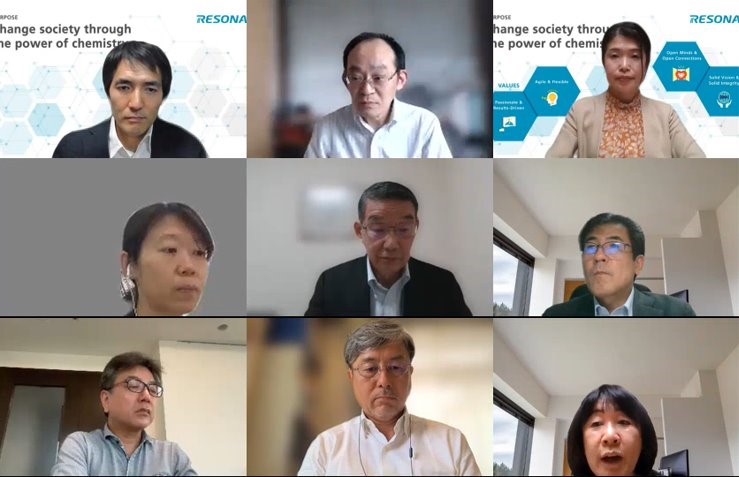About Resonac's Human Capital Management
Collective engagement conducted with institutional investors in Japan about Resonac’s human capital strategies and human capital management model

Japanese institutional investors associated with the Institutional Investors Collective Engagement Forum,
Nori Imai (CHRO, Resonac), Kohei Hagimori (General Manager, Human Resources Development Dept., Resonac),
Nami Matsuko (General Manager, Sustainability Department, Resonac)
We held a collective engagement meeting with Japanese institutional investors associated with the Institutional Investors Collective Engagement Forum (IICEF) on Resonac’s human resource strategies and the proposed human capital management model under consideration, as we aim to sustainably enhance corporate value by practicing our Purpose and Values. The meeting was attended by Nori Imai, Chief Human Resources Officer (CHRO) of the Company, and other managers in charge of human resources, investor relations, stakeholder relations, and sustainability.
(Conducted online on April 27, 2023, with the attendance of 13 investors from five institutions and four executive directors and coordinators of IICEF)
Aiming to further improve the quality of information dissemination based on collective engagement
The IICEF promotes constructive dialogue between companies and investors to enhance medium- to long-term corporate value. It organizes a program in which the IICEF’s member investors set themes, prepare engagement letters outlining their views and requests, and propose collective engagement sessions with a company.
This time, Resonac proposed to conduct collective engagement with investors that take a long-term view, on the themes of “Resonac's human capital management” and “its approach to human resource materiality and non-financial goals,” which are being discussed in the Company. With the cooperation of the IICEF, we were able to hold the meeting.
The following issues were raised by the investors in the collective engagement, and we used them as a guide to upgrade our future initiatives and information disclosure, while revamping the content of communication regarding areas of their interest. For example, their inputs are reflected in human resource strategies of the entire company and each business division (Human Resource Strategies on page 91 of the Resonac Report 2023), and in the analysis of opportunities and risks related to our integration in line with material issues for management (materiality) (Materiality and Non-financial KPIs on page 57 of the Resonac Report 2023).
We will continue to improve our communication and disclosure practice and incorporate sensible evaluations and feedback from stakeholders with a view to creating greater value.
Examples of issues raised in the collective engagement
- 1. Progress in fostering corporate culture during and after the integration
Many participants requested the information about the status of fostering corporate culture after the integration and specific culture-fostering efforts, including goal management in implementing the Purpose and Values. We reaffirmed that it is important to implement human resource strategies in a manner that aligns with management strategies, further examine the sources of Resonac's uniqueness and differentiating factors in human resource strategies, and devise ways to gain understanding of our efforts. - 2. Linking business strategies with human resource strategies
We confirmed that there was a high level of investor interest in a correlation between the business strategies of each division and the human resource strategies under consideration, and we enhanced the disclosure of the business-specific strategies that are being considered. - 3. Reasons why Resonac places the highest priority on development of co-creative human resources
The investors asked about the definition of co-creative human resources and why they are needed in our organization. We have realized that we are required to provide convincing explanations about specialist human resources in line with our business and functional strategies. We presented actual cases to show our progress. - 4. A gap between the current situation and the goals regarding human resources and corporate culture, and the roadmap going forward
They asked if there was any culture that had existed in the respective companies prior to the integration and was lost or broken through the integration, and to what extent human resources were unfortunately outflown through the integration. We recognized the importance of properly informing our approach of filling the gap. We are convinced that if we can disclose the top management's recognition of these issues and how we address them going forward, we can foster the confidence of investors in our strategies and ability to cultivate corporate culture. - 5. Expectations for employer branding to attract human resources
We recognized that employer branding should be an area of focus going forward.
